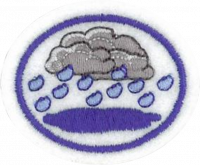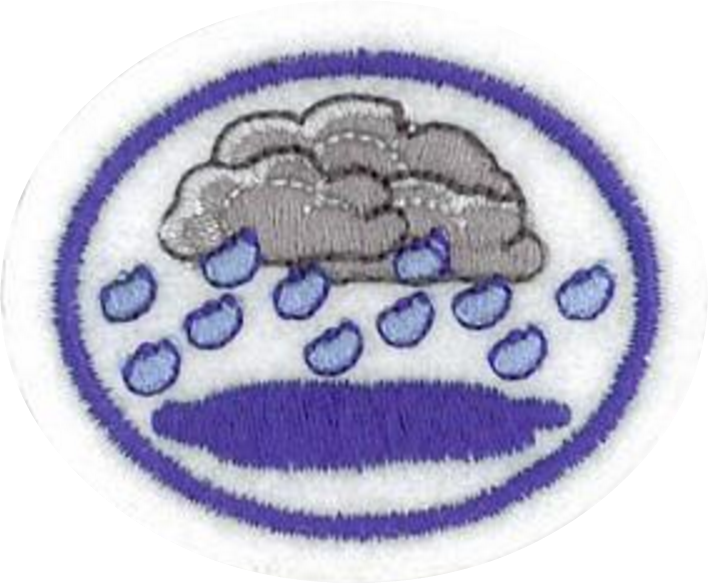Difference between revisions of "AY Honors/Water Science/Requirements/es"
(Created page with "Especialidades JA/Ciencia de agua/Requisitos") |
(Created page with "</noinclude>Usando productos domésticos, construir un modelo tridimensional del átomo de agua. Explicar su composición química. <noinclude>") |
||
| Line 3: | Line 3: | ||
<section begin=Body /> | <section begin=Body /> | ||
| − | <b>1. <section begin=req1 /><noinclude> | + | <b>1. <section begin=req1 /><noinclude></noinclude>Usando productos domésticos, construir un modelo tridimensional del átomo de agua. Explicar su composición química. |
| − | </noinclude> | + | <noinclude></noinclude><section end=req1 /></b> |
| − | <noinclude | ||
| − | |||
| − | <b>2. <section begin=req2 /><noinclude> | + | <b>2. <section begin=req2 /><noinclude></noinclude>Hacer una lista y describir (verbalmente u oralmente) algunas características del agua que lo distingue de casi todos los otros elementos. |
| − | </noinclude> | + | <noinclude></noinclude><section end=req2 /></b> |
| − | <noinclude | ||
| − | |||
<b>3. <section begin=req3 /><noinclude><div lang="en" dir="ltr" class="mw-content-ltr"> | <b>3. <section begin=req3 /><noinclude><div lang="en" dir="ltr" class="mw-content-ltr"> | ||
Revision as of 15:28, 23 April 2021
Nivel de destreza
1
Año
2015
Version
15.11.2025
Autoridad de aprobación
División Norteamericana
1. Usando productos domésticos, construir un modelo tridimensional del átomo de agua. Explicar su composición química.
2. Hacer una lista y describir (verbalmente u oralmente) algunas características del agua que lo distingue de casi todos los otros elementos.
3.Making use of photos, diagrams, or any other form of visual aid illustrate the three states of water.
Describe, illustrate or represent the difference between clouds, snow and rain.
Through photos or diagrams identify and list the five main types of precipitation.
What is the boiling and freezing point of water?
Water Trivia: The following questions can be utilized in different forms to promote learning and understanding about water. Questions can be adapted for Jeopardy, Bingo, and Wheel of Fortune among many others. Creativity is strongly encouraged.
- a.
What is the estimated weight of one gallon/4 liters of water?
- b.
The human body consists of how much water?
- c.
What is the largest ocean on Earth?
- d.
What is the largest lake in the World?
- e.
What is the largest lake in North America?
- f.
Can sound travel faster through water or air?
- g.
What is the deepest point in the world’s oceans?
- h.
What is the longest river on Earth?
- i.
How long can a person survive without water?
- j.
What makes water hard?
- k.
What uses the most water in households?
- l.
What is the word used to describe how much water vapor is in the air?
- m.
What is the name of the canal that connects the Pacific Ocean with the Atlantic Ocean?
- n.
Which conducts heat more efficiently – water or air?
- o.
How much water do you need to drink daily?
- p.
What chemical is added to water to kill harmful germs?
- q.
How many gallons/liters of water are used in a 5-minute shower?
- r.
What is the longest navigable river in your country?
- s.
T or F: Water is often called the universal solvent because many things can be dissolved in it.
8.
Answer the following:
- a.
How much of the earth is covered by water?
- b.
How much of the earth’s water is fresh water?
- c.
Where is water found on earth?
9.
Select three of the following and discuss at least one way water is used.
- a.
Agriculture
- b.
Washing
- c.
Drinking
- d.
Fire Extinction
- e.
Transportation
10.
What is a body of water? Through photos, diagrams or sketches, be able to illustrate the following bodies of water below, naming one that can be found in your city, town, county or state. (if possible)
- a.
River
- b.
Lake
- c.
Sea
- d.
Ocean
- e.
Rapid
- f.
Canal
- g.
Creek
- h.
Basin
- i.
Glacier
- j.
Gulf
- k.
Harbor
- l.
Lagoon
- m.
Reservoir
11.
Discuss with a group the biblical context of at least three of the following text as each relates to the significance of water in the Bible.
- a.
Genesis 1:20
- b.
Exodus 14:21
- c.
Matthew 28:19
- d.
John 3:5
- e.
John 4:14
- f.
Revelation 22:1
12.
Demonstrate a technique that can be used to convert salt water into clean drinking water.


